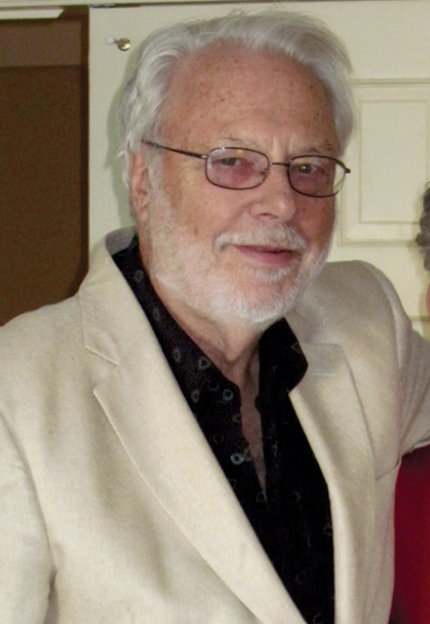Paul Frederick Zweifel
DOI: 10.1063/PT.3.3671
Paul Frederick Zweifel died on 12 February 2017 in Blacksburg, Virginia. He was a prominent leader in the mathematical theory of nuclear reactors and the mathematical development of transport theory.

Paul Frederick Zweifel

Born in New York City on 21 June 1929, Paul later moved with his family to Spartanburg, South Carolina. At age 15 he was awarded a Pepsi-Cola scholarship to attend the college of his choice, Carnegie Institute of Technology (now Carnegie Mellon University). There he shared living quarters with John Nash Jr, the US mathematician who received the 1994 Nobel Memorial Prize in Economic Sciences. After graduating from Carnegie Tech in three years, he attended Duke University, where he received his PhD in physics in 1954 under the guidance of Eugene Greuling. The title of his dissertation was “Capture-positron branching ratios.” During his years of graduate study, he was a sports journalist at the Durham Sun newspaper, where he interviewed Willie Mays and other athletes.
After completing his PhD, Paul worked at the General Electric Knolls Atomic Power Laboratory. For his contributions to the theory of the slowing down and thermalization of neutrons, which are important in the design and development of water-moderated nuclear reactors, he received an Ernest Orlando Lawrence Memorial Award from the Department of Energy in 1972.
From 1958 to 1968, Paul was a professor of nuclear engineering at the University of Michigan. There he began working with physicist Kenneth Case, who made groundbreaking contributions to neutron transport theory at Los Alamos during the Manhattan Project. In 1967 they published their widely cited monograph Linear Transport Theory (Addison-Wesley) on the linear Boltzmann equation. That equation is used, for example, to analyze energy transport by neutrons in a nuclear reactor or photons in an absorbing and scattering medium. Paul and Case’s mathematical approach enables a more direct solution to many problems of the type analyzed by Boris Davison in Neutron Transport Theory (Clarendon Press, 1957) and Subrahmanyan Chandrasekhar in Radiative Transfer (Dover, 1960).
During a sabbatical year at the Middle East Technical University in 1965, Paul and physicist Erdal İnönü organized a NATO Advanced Study Institute on transport theory in Ankara, Turkey.
In 1968 Paul moved to Blacksburg, Virginia, where he became a professor of physics at Virginia Tech and was soon appointed as University Distinguished Professor. In 1969 he founded a series of conferences now known as the International Conferences on Transport Theory (ICTT). The biennial meetings continue to bring together experts in mathematical and applied transport theory in multifarious science and engineering disciplines from around the world. Because of his leadership and the force of his personality, the conferences, which are not affiliated with any professional society, have been held in the US 14 times, Italy 3 times, and once each in China, Brazil, Sweden, Russia, England, and Hungary; Paul hosted six of the conferences in Blacksburg.
The journal Transport Theory and Statistical Physics (TTSP), with Paul as its founding editor from 1971 until 1983, has published the proceedings of nearly every ICTT meeting. The journal was retitled in 2014 as the Journal of Computational and Theoretical Transport in recognition of the growing popularity of numerical techniques in transport theory.
Perhaps Paul’s most notable work in transport theory was pioneering the use of rigorous mathematics to bring order to the chaos of mathematical approaches for solving the linear transport equation. He developed existence and uniqueness theorems for the neutron transport equation and investigated the spectrum of the linear transport operator under general conditions.
Paul retired from Virginia Tech in 1996. He was an opera lover, a musician, and a vocalist. He also was fluent in Italian; with his wife, Kathy, they provided supertitles for opera companies across the US, and they advertised their services with “Have Projector, Will Travel” business cards. He published articles on the mathematical theory of ancient and modern music. Paul loved to travel, and one of his most memorable trips, which he took with his family, was his 1983–84 sabbatical in Florence, Italy, where he also served as choir director of St James Episcopal Church. Throughout his life, Paul continued his passions for Gilbert and Sullivan musical theater, sports, and bridge.
To those who study particle transport theory, Paul was a special figure. He was as comfortable with practical applications of the transport equation, particularly to nuclear reactors, as he was with the underlying mathematics. He had a flare for the unusual, and he often provided readers of TTSP with book reviews on esoteric subjects and entertained audiences with presentations on topics such as why Albert Einstein should have received five Nobel Prizes. Intellectually, Paul cast a large shadow on our community. Although sometimes contentious and seldom politically correct, with his witty sense of humor he could flatter with ridicule, critique with praise, and encourage with affection. He was an inspiration to us and a delightful colleague who will be greatly missed.
More about the Authors
Norman J. McCormick. University of Washington, Seattle.
Charles E. Siewert. North Carolina State University, Raleigh.
Barry D. Ganapol. University of Arizona, Tucson.
Anil K. Prinja. University of New Mexico, Albuquerque.
